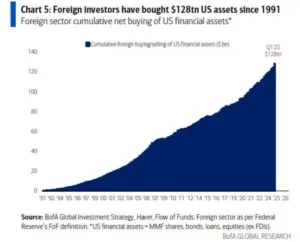In a shift from conventional economic policy, the Trump administration is prioritizing the management of 10-year Treasury yields over influencing short-term interest rates set by the Federal Reserve. U.S. Treasury Secretary Scott Bessent has emphasized this strategic change, marking a new approach under President Donald Trump’s second term.
A Strategic Shift in Economic Policy
Traditionally, administrations have focused on urging the Federal Reserve to adjust short-term interest rates to control inflation and stimulate growth. However, Secretary Bessent has made it clear that the current administration is more concerned with the 10-year Treasury yield. In a recent statement to Fox Business, Bessent remarked, “He and I are focused on the 10-year Treasury,” highlighting its critical role in determining long-term borrowing costs for businesses and consumers.
Why the 10-Year Treasury Yield Matters
The 10-year Treasury yield serves as a benchmark for various financial products, including mortgage rates and corporate bonds. Lower yields can make borrowing cheaper, potentially boosting investment and economic activity. However, rising yields can increase borrowing costs, slowing down economic growth.
Since Trump’s reelection in November 2024, the 10-year yield has been volatile, surging close to 4.80% due to market concerns over inflation and the administration’s fiscal policies. Trump’s plans for tax cuts, higher tariffs, and increased government spending have fueled expectations of a rising fiscal deficit and inflationary pressures. Despite this, recent statements from Bessent have helped stabilize yields, which currently stand at approximately 4.42%.
Market Reactions and Economic Implications
Financial markets have responded with caution to the administration’s new focus. Investors and analysts suggest that if the government successfully manages to lower 10-year yields, it could lead to a rally in real estate and equities, both of which are highly sensitive to interest rates. However, some experts warn that pushing yields too low could weaken the U.S. dollar and lead to inflationary risks.
On the other hand, the Federal Reserve is charting its own course, with Fed Governor Christopher Waller recently stating that rate cuts could be considered if inflation continues to decline. The administration’s independent approach to managing longer-term yields suggests a more direct involvement in shaping market expectations, possibly reducing reliance on Fed actions.
Challenges and Future Outlook
The success of this policy will depend on several factors, including the administration’s fiscal strategies, global economic conditions, and investor sentiment. With U.S. national debt at record highs, any efforts to control long-term yields will need to be balanced against fiscal discipline.
As 2025 progresses, the financial world will be closely watching whether the Trump administration’s strategy effectively stabilizes markets and supports economic growth. While this approach could redefine economic management in the short term, the long-term consequences remain uncertain in an evolving global landscape.
Bringing you the latest updates on finance, economies, stocks, bonds, and more. Stay informed with timely insights.







Be First to Comment